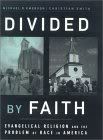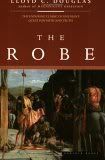 I just started reading Kevin Vanhoozer's new book, Everyday Theology, and I'm absolutely loving it. Part of the Cultural Exegesis series published by Baker Academic, it aims to equip Christians with the skills necessary to both read and write cultural texts. The 'proof text' he cites for this endeavor is Matthew 16:1-3:
I just started reading Kevin Vanhoozer's new book, Everyday Theology, and I'm absolutely loving it. Part of the Cultural Exegesis series published by Baker Academic, it aims to equip Christians with the skills necessary to both read and write cultural texts. The 'proof text' he cites for this endeavor is Matthew 16:1-3:
(1) The Pharisees and Sadducees came to Jesus and tested him by asking him to show them a sign from heaven. (2) He replied, "When evening comes, you say, 'It will be fair weather, for the sky is red,' (3) and in the morning, 'Today it will be stormy, for the sky is red and overcast.' You know how to interpret the appearance of the sky, but you cannot interpret the signs of the times.
What does it mean to interpret the signs of the times? For Vanhoozer, it means becoming culturally literate. We must learn to understand culture before we either embrace or reject it, and he proposes a multi-dimensional/multi-perspectival methodology by which to do it.
He spends some time defining what culture is, distinguishing it from society and nature: it is "a lived worldview". Functionally, culture does four main things: it communicates, orients, reproduces and cultivates nothing less than our vision of the meaning of life. It is part of our spiritual formation, whether we are aware of it or not. As such, it is vital that we extend Anselm's notion of theology as "faith seeking understanding" to culture, attempting to understand it on its own terms, but with the added dimension of faith.
So what does that look like? Vanhoozer proposes a couple of grids through which we can read cultural texts. Biblically, we need to view it in the context of creation, fall and redemption. Doctrinally, we can seek understanding in terms of the incarnation, general revelation, common grace, and the imago Dei. To be culturally competent we must keep an eye on the worlds behind, in, and in front of the texts (ex. producers, products and consumers). What does all that mean, exactly? Well... read the book. ;)
I love that he speaks in terms of texts, narratives, drama and discourse. It highlights the dynamic nature of the thing, the fact that it is constantly moving and changing. In addition, he asserts that we are not passive consumers of culture nor relegated to being 'mere' readers of it, but that we are also responsible for writing it. If history is "the document of humanity", what are we adding to the story? As Christians, are we producing texts that are redemptive and pointing towards the kingdom of God, or merely retelling the stories of our times?
A final thought: On page 32 he states that "We need to guard what enters and inhabits our hearts. We should be dwelling in the real world displayed in Scripture, not the counterfeit worlds projected by other, non-canonical texts." What struck me as I read it was that I think often we have that reversed. I know I do. Which world is our real world? (Just to clarify: this is not pointing at all in the direction of gnosticism. Read it a few times. Let me know what you think of the idea.)
As I go through this, I'll try and post a bit on each chapter. I hope y'all find it as interesting as I do!










0 comments:
Post a Comment